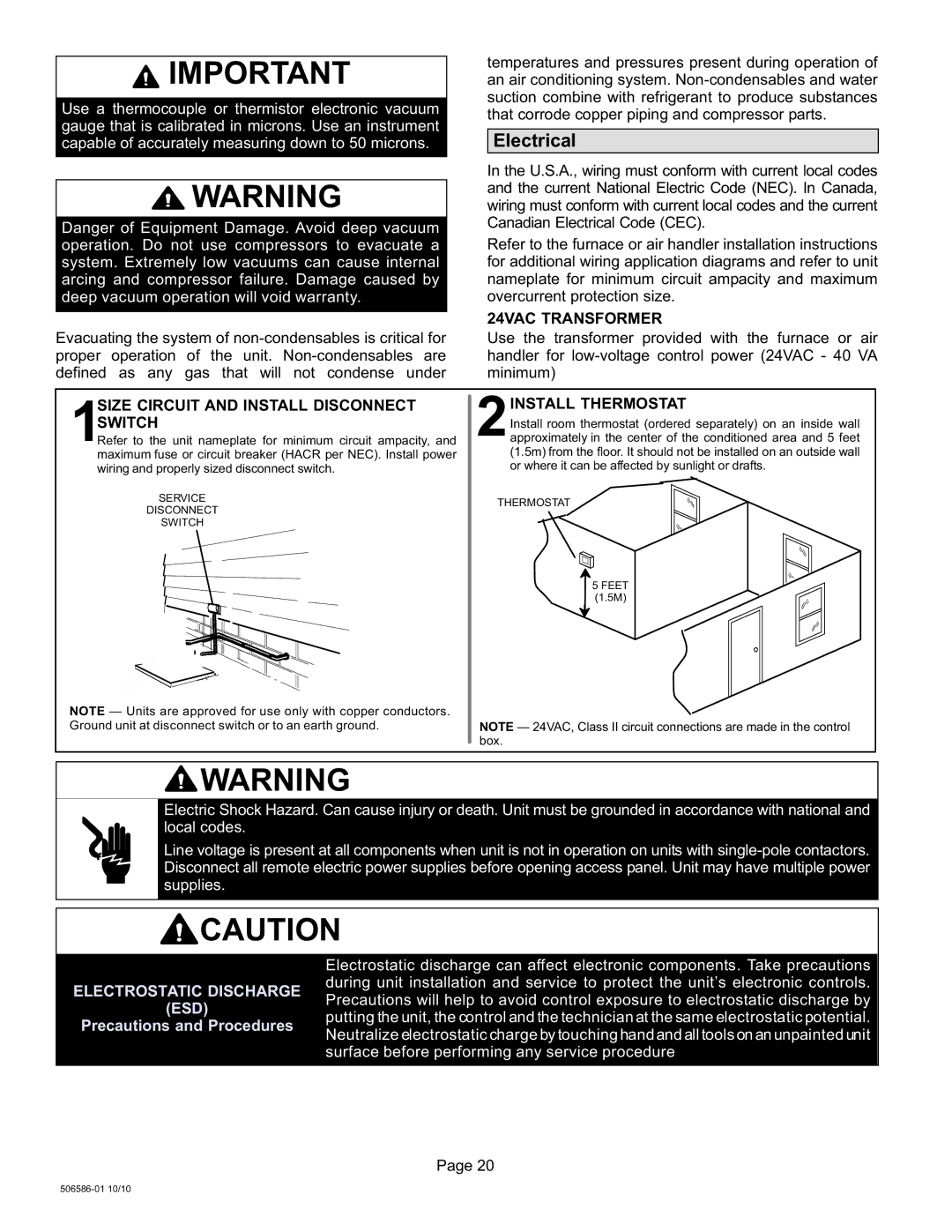
![]() IMPORTANT
IMPORTANT
Use a thermocouple or thermistor electronic vacuum gauge that is calibrated in microns. Use an instrument capable of accurately measuring down to 50 microns.
![]() WARNING
WARNING
Danger of Equipment Damage. Avoid deep vacuum operation. Do not use compressors to evacuate a system. Extremely low vacuums can cause internal arcing and compressor failure. Damage caused by deep vacuum operation will void warranty.
Evacuating the system of non−condensables is critical for proper operation of the unit. Non−condensables are defined as any gas that will not condense under
temperatures and pressures present during operation of an air conditioning system. Non−condensables and water suction combine with refrigerant to produce substances that corrode copper piping and compressor parts.
Electrical
In the U.S.A., wiring must conform with current local codes and the current National Electric Code (NEC). In Canada, wiring must conform with current local codes and the current Canadian Electrical Code (CEC).
Refer to the furnace or air handler installation instructions for additional wiring application diagrams and refer to unit nameplate for minimum circuit ampacity and maximum overcurrent protection size.
24VAC TRANSFORMER
Use the transformer provided with the furnace or air handler for
SIZE CIRCUIT AND INSTALL DISCONNECT
1SWITCHRefer to the unit nameplate for minimum circuit ampacity, and maximum fuse or circuit breaker (HACR per NEC). Install power wiring and properly sized disconnect switch.
SERVICE
DISCONNECT
SWITCH
2INSTALL THERMOSTAT
Install room thermostat (ordered separately) on an inside wall approximately in the center of the conditioned area and 5 feet (1.5m) from the floor. It should not be installed on an outside wall or where it can be affected by sunlight or drafts.
THERMOSTAT
5FEET (1.5M)
NOTE Units are approved for use only with copper conductors. Ground unit at disconnect switch or to an earth ground.
NOTE AC, Class II circuit connections are made in the control box.
![]() WARNING
WARNING
Electric Shock Hazard. Can cause injury or death. Unit must be grounded in accordance with national and local codes.
Line voltage is present at all components when unit is not in operation on units with
![]() CAUTION
CAUTION
ELECTROSTATIC DISCHARGE
(ESD)
Precautions and Procedures
Electrostatic discharge can affect electronic components. Take precautions during unit installation and service to protect the unit’s electronic controls. Precautions will help to avoid control exposure to electrostatic discharge by putting the unit, the control and the technician at the same electrostatic potential. Neutralize electrostatic charge by touching hand and all tools on an unpainted unit surface before performing any service procedure
Page 20
506586−01 10/10
